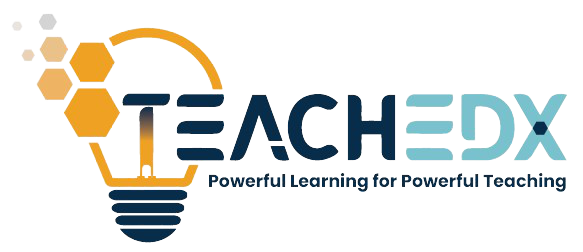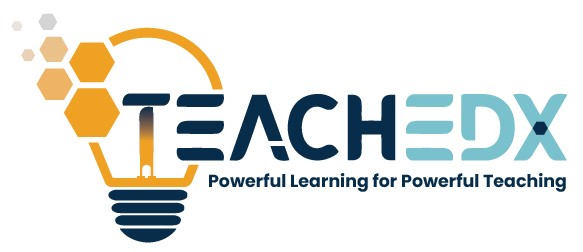From Objective to Assessment: Aligning Your Lesson Plans
- Venessa Powell
- January 8, 2024
- No Comments
Aligning your lesson plan from objective to assessment takes deliberate effort and is the linchpin of effective teaching. This alignment ensures that what we aim to teach (our objectives) is what we actually teach (our instruction) and is what we ultimately test (our assessment). When these three elements are not in sync, students can become confused or frustrated, teachers may feel their efforts are not yielding the desired results, and the educational experience suffers. We can engineer this alignment by setting clear objectives, designing instruction that aligns with our objectives, developing assessments that measure our objectives, and engaging in a process of reflection and adjustment.
Setting Clear Objectives
The first step in aligning your lessons is setting clear, measurable objectives. Objectives should articulate what students will be able to know or do by the end of the lesson or unit. These objectives should be informed by larger curricular goals as outlined in your curriculum guide or syllabus. As you review the objectives you intend to teach, consider the following:
- What are the knowledge and/or skills that the students should master at the end of this lesson?
- At what level of cognitive rigour are they expected to perform (especially in external examinations)? See Webb’s Depth of Knowledge and Hess’ Cognitive Rigour Matrices.
- Does the language in the objective specify observable and measurable outcomes?
- Beyond getting the right answer, how will I know when the student has mastered the objective? What will be my source(s) of evidence?
- What are the different levels of performance related to this objective (for example, below basic, basic, proficient, and advanced) and what behaviours do I expect to see at each level?
- What are the prerequisite knowledge and/or skills that students need before they can begin to acquire the stated knowledge/skill?
Setting Clear Objectives Tip
- Restate objectives in student-friendly language so that students can monitor their progress.
- Use content progressions to gain clarity on the developmentally appropriate steps required as students progress from novices to experts. This sequence will help you to determine the possible opportunities for misconceptions and misunderstandings before teaching. You can use this knowledge to prepare mitigation strategies
Designing Instruction that Aligns with Objectives
Once your objectives are set, think about the instructional strategies that will best help students achieve these goals. This is where student-centred teaching really comes into play. Rather than lecturing or providing one-size-fits-all instruction, consider the following strategies:
- Use differentiated instruction to cater to varied learning styles and levels. Provide multiple means for students to acquire and show their understanding of the information (print, video, and visual). Rather than tell them, have them research and share their thinking.
- Incorporate active learning techniques that engage students in the process. Use strategies such as reciprocal questioning, peer teaching and problem-based learning to put students in the driving seat. The more students have to think and make connections between and among what they already know and what they are learning, the more likely they are to retain the information.
- Design collaborative activities that allow students to learn from and with each other. As students listen to and constructively critique each other’s ideas, their knowledge deepens. Collaborative tools such as shared Google Docs can help them to work together even if they are not in the same geographic space.
- Integrate technology thoughtfully to enhance learning rather than distract from it. There are many tools that allow students to engage with content in ways that are not possible without them. Virtual Reality (VR) and Augmented Reality (AR) technology can provide ways for students to safely apply their knowledge in simulations of real-world contexts.
Developing Assessments that Measure Objectives
When aligning lesson plans from objective to assessment, assessment is often where misalignment becomes most apparent. To maintain alignment, assessments should directly measure the objectives you’ve set. They should provide evidence of students’ understanding and their ability to apply what they’ve learned. Consider these assessment strategies:
- Use a variety of formative assessments to gauge understanding throughout the lesson or unit. Formative assessments should help you to gather evidence of the development of knowledge/skills outlined in your content progression. Be sure to measure these knowledge/skills at varying cognitive levels. Anticipate student responses and plan how you will address those that are off-track.
- Design summative assessments that require students to apply knowledge or skills in new ways, demonstrating deeper understanding. Summative assessments help you to make claims about the student’s mastery of the objective. The evidence they elicit should allow you to make those claims confidently. That is, your claim (e.g., the student has a deep understanding of how types of government influence the distribution of national resources) should be easily justified by a third party using the evidence provided.
- Include self-assessment and peer-assessment opportunities to build metacognitive skills and reflection. One competence of the 21st-century learner is their ability to monitor their learning. Help them develop these skills by including self-assessment and peer assessment prompts throughout the unit. If students are new to peer assessments, help them craft constructive feedback by modelling the process in a simulation and giving them sentence starters.
- Ensure that assessments are fair and accessible to all students, taking into account diverse backgrounds and abilities. ‘Fair and accessible’ does not mean ‘easy’. It means that there should be no barriers to students being able to complete the assessment. For example, the assessment should be free from bias to particular groups or experiences. Students should be familiar with the content, language and symbols used (i.e. no new concepts/terms/symbols should be introduced in the assessment). The cognitive rigour of the assessment should be similar to what they were exposed to during instruction.
Constant Reflection and Adjustment
Finally, the process of aligning your lesson plan from objective to assesment is ongoing. Reflect on the success of your lessons and be willing to make adjustments. Did the items elicit the evidence you were expecting? Did the students’ responses provide sufficient evidence for you to make claims about their performance level? Do you need to make adjustments to the items to better elicit the evidence you need? Seek feedback from your students on the clarity of your objectives, the effectiveness of your instruction, and the fairness of your assessments.
Conclusion
Remember, student-centred teaching is not about making learning easy; it’s about making learning meaningful, engaging, and accessible. By aligning objectives, instruction, and assessment, you create a coherent framework that supports all students in their learning journey. Aligning our lessons from objectives to assessments is not just a box-ticking exercise; it’s a commitment to ensuring that the educational experiences we provide are meaningful, effective, and student-centred.
Articles you may also find interesting:
Like this article?

Venessa Powell
I never wanted to become a teacher. As a matter of fact, anybody who knew me knew that I was set on becoming a graphic designer. Some would say it was by divine intervention others may call it the universe redirecting me, but circumstances led me to teachers’ college at the end of high school where I pursued secondary mathematics education.


